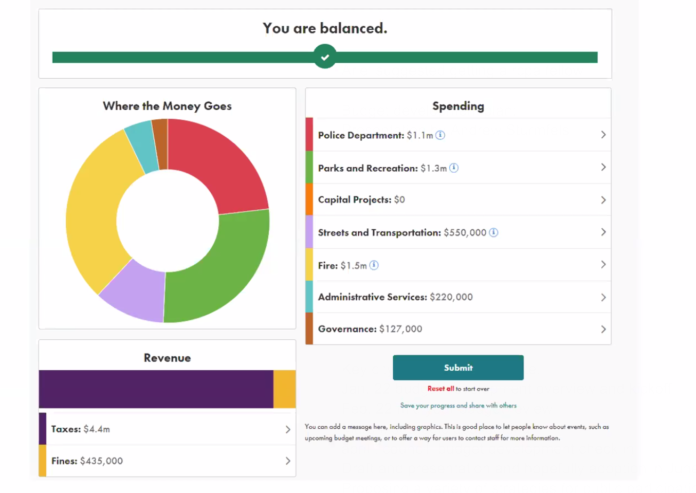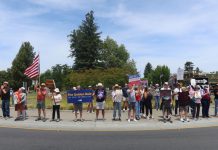The City of Healdsburg is launching a new simulation tool this February that allows residents to create and balance a city budget and submit their concept to the City of Healdsburg.
The tool is part of an effort to make the city’s finances and budgeting process more transparent and easier for people to understand, and to get public input on the proposed budget.
Healdsburg is about to kick off its two-year budget cycle starting on July 1, 2022. Budget work will start for city department heads in February and a community meeting to discuss the budgets is scheduled for Feb. 17.
On Feb. 18, the city will launch its public budget simulation tool.
“Historically, public participation in the budget development process has been limited to the city council meetings and the annual Measure T survey and it was important to both city manager Kay and I to bring forward a budget development process that engages the community in a meaningful way,” Andrews Sturmfels, the city’s finance/administrative services director, said during a Jan. 3 city council meeting.
In the budgeting simulation, participants can select how much money that they want to set aside for police, parks and recreation, capital projects, streets and transportation, fire services, administrative services and governance, however, the simulation won’t let you submit your budget if it is not balanced and is at a deficit.
Participants can also select how they may want to increase revenue, such as increasing sales tax for instance. This feature gives the city an idea of what revenue measures residents would support.
A public survey in both English and Spanish on capital improvement projects will also be released and residents will have until May 1 to respond to the survey.
In the survey, residents will be able to prioritize which city capital improvement projects they’d like to see.
Residents will be able to prioritize various projects and initiatives including supporting small business, expanding broadband internet, building sidewalks, improving accessibility, road resurfacing, homelessness solutions and among others, bridge repair.
Other budget public participation components include scheduling two public meetings in English and Spanish, both with a participatory framework and reaching out to community based organizations to do small group qualitative discussions.
This year’s budget development has six various goals, according to Sturmfels.
“We’ve developed a series of goals that we think largely aligns with the community priorities that we’ve heard and also because we have a two-year budget cycle, we want to be ambitious about the goals we undertake,” he said.
Budget development goals include:
– Align budget resources with council adopted goals.
– Incorporate identified needs from the long-range financial forecast model, which includes street and sidewalk improvements, internal services fund, a community services infrastructure plan and the fire substation.
– Update the capital improvement plan and implement new policies and procedures for accounting for capital projects.
– Update the city pension funding policy.
– Update the city reserve policy.
– Improving accounting efficiency through fund consolidation.
On Feb. 22, the city administrative services and finance department will present the mid-year budget review and the pension liability funding policy review and update. In April after the public survey is closed, the city council will receive a budget development check in.
The city will hold a special council budgeting workshop and public meeting on May 9 and on May 16, city staff will provide a third quarter budget update.
If all things go as planned, the budget and capital improvement plan will be adopted on June 6.









